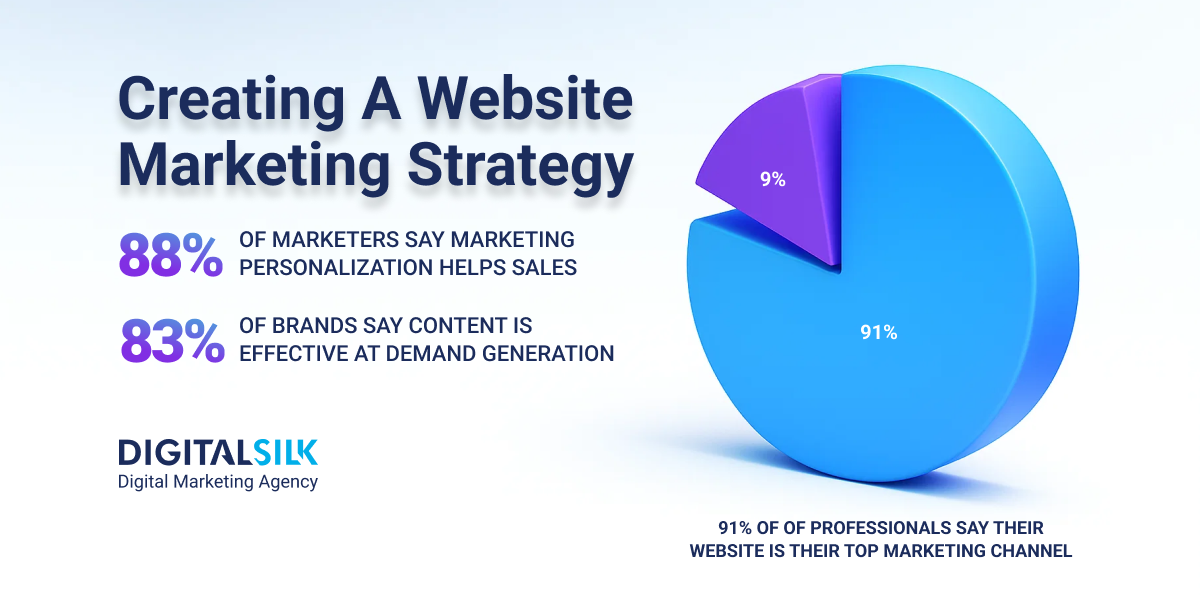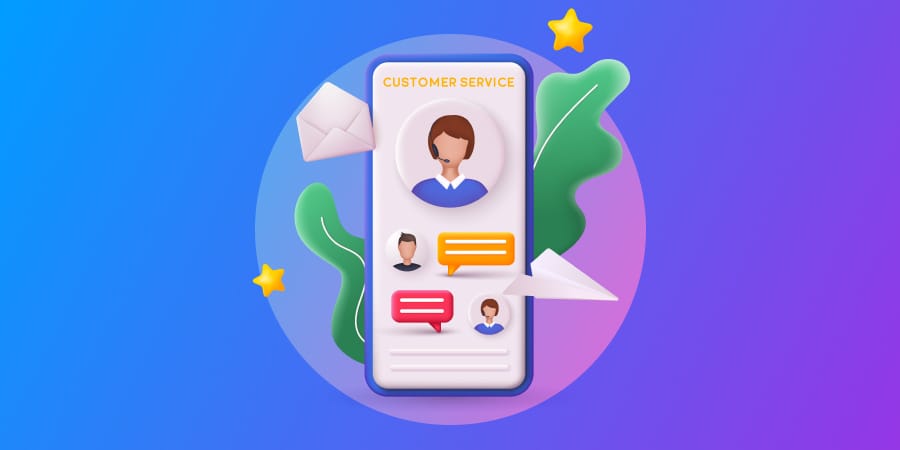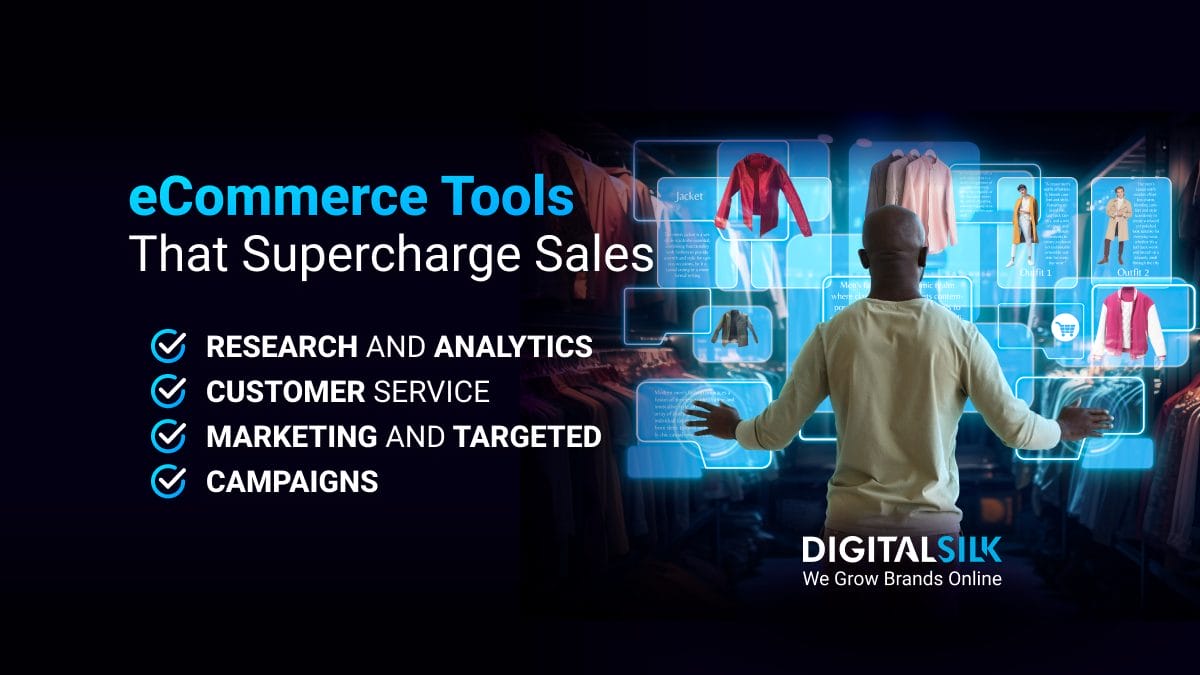Website Marketing Strategy: Key Highlights
-
Your website shapes first impressions: Visitors immediately look for signs that you understand their challenges and speak directly to their needs.
-
Channel-specific tactics: Strategies like intent-based SEO, segmented email journeys, native placements, LinkedIn targeting and retargeting all feed qualified traffic into evaluation pages.
-
Behavior-based refinement: Patterns in clicks, scrolls, exits and returns show which topics, formats and pages drive evaluation and which need to be rebuilt to support conversion.
The numbers are in and they are indisputable: 91% of professionals say their website is their top marketing channel, a clear sign that buyers rely on it far more than most organizations assume.
Prospects use those early moments on a site to decide whether a company understands their pain points or feels disconnected from what matters to them.
When a website guides that judgment with the right signals, it draws in qualified visitors, keeps them engaged and encourages them to move further into their evaluation.
In this post, we will break down the required steps to building an effective website marketing strategy that connects your channels, messaging and performance goals to measurable growth.
11 Advanced Website Marketing Strategies To Maximize Visibility
A website marketing strategy is a plan of action that relies on external channels, such as search engines and social media, to drive qualified traffic to your website and help you increase conversions.
Methods of growing your organic traffic may vary in different industries, but there are several bulletproof ways of doing this that work, regardless of your niche:
1. Search Engine Optimization
Organic search drives a significant share of buyer activity, with 53.3% of all website traffic coming from search engines and the first position on Google earning 27.6% of all clicks.
The logic is simple: when your prospect needs the type of services or products you provide, they are likely to open Google and type in relevant terms or keywords, such as:
- “Women’s shoes international delivery”
- “Best restaurants in New York”
- “Top product design agencies in Los Angeles”
An effective SEO strategy can help you rank in Google for relevant terms and entice prospects who are looking for what you have to offer.
Here are practical ways to put this strategy into motion for your website marketing:
- Identify keywords tied to real buying intent by studying the phrases prospects use when they’re evaluating solutions, not broad informational topics.
- Map those terms to dedicated pages that explain your offering clearly, address common objections and give visitors a reason to continue exploring.
- Analyze the top-ranking competitors for each keyword to understand what searchers respond to, then create content that provides deeper insight instead of repeating what already exists.
- Improve internal linking so high-performing pages support newer or strategic pages you want to build authority around.
- Keep your content updated with new examples, data points and product developments to signal relevance to both users and search engines.
2. Pay-Per-Click Ads
Search ad spending in the U.S. is projected to reach $183.79 billion by 2028, which reflects how heavily companies depend on paid visibility to capture buyers who are actively searching for solutions.
PPC places your offer in front of people who are actively searching for a solution, which means the traffic you attract is already oriented toward evaluation.
Since you pay only when someone clicks, PPC becomes a controlled way to direct interested visitors to your website instead of paying for impressions that never turn into engagement.
The main advantage of using PPC lies in the targeting options. Depending on the platform you advertise on, you’ll have a different set of targeting options. The most common are:
- Location(s)
- Gender
- Age groups
Some of the more refined targeting options, like on LinkedIn and Facebook, for example, may also include “interests” and more nuanced demographic filtering.
Some of the ways you can maximize PPC engagement in your website marketing strategy include:
- Build campaigns around high-intent keywords that reflect how prospects compare providers or narrow their shortlist.
- Use refined targeting options such as job title, industry and interests on platforms like LinkedIn and Facebook to focus spend on audiences aligned with your ideal buyer.
- Create tailored landing pages that match the ad’s message and guide visitors toward a specific next step without unnecessary distraction.
- Monitor search terms consistently to remove irrelevant queries and shift budget toward phrases that bring in qualified traffic.
For instance, a query like “construction services Miami” brings up sponsored listings before any organic results, giving paid advertisers the first opportunity to speak to someone who is evaluating providers in that location.
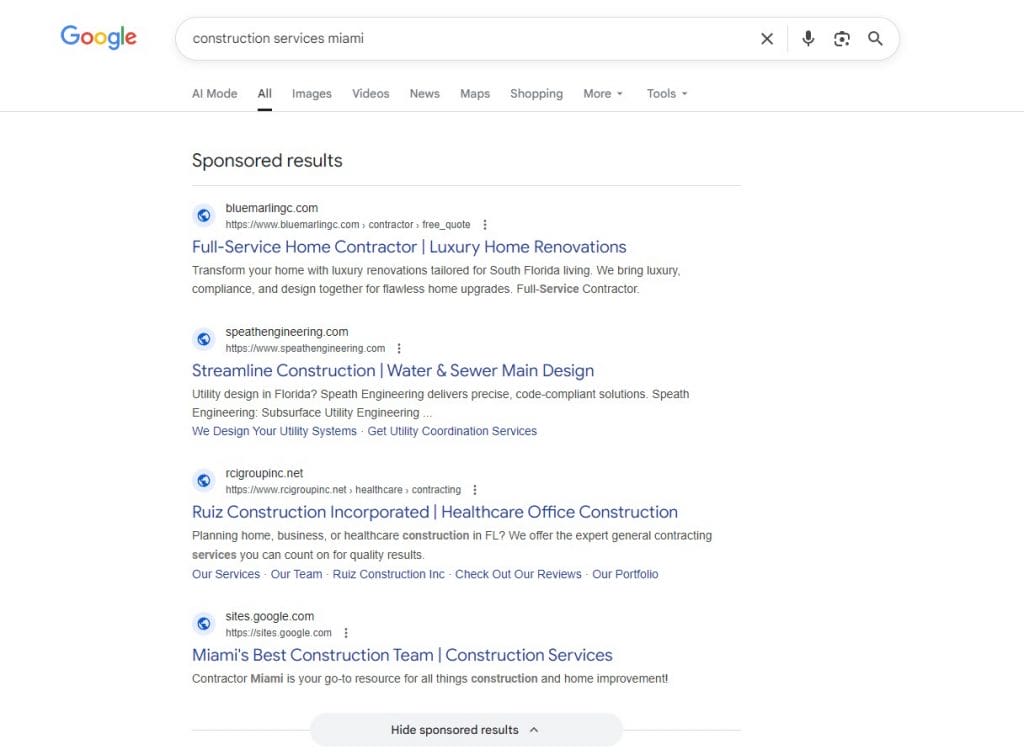
Those listings appear at the moment prospects are narrowing their choices, which is why PPC remains such an effective way to steer high-intent traffic toward a website.
3. Native Ads
Native advertising means using paid ads in a way that matches the look, design and function of the website they are featured on.
This format works well because people engage more readily with information that matches the context they’re already immersed in, which gives your message a fairer chance of being noticed.
With 88% of professionals reporting that personalization directly influences sales, native ads offer a valuable opportunity to present tailored content that matches a prospect’s industry, interests or stage of research without feeling intrusive.
Consider the following ways to apply native advertising within your website marketing strategy:
- Create industry-specific content assets and distribute them through native placements on publishers that attract your target audience.
- Match the tone and structure of your ad to the surrounding content so it feels integrated while still directing readers toward a clear next step.
- Use behavioral and interest-based targeting to deliver personalized content that reflects what prospects have previously viewed or engaged with.
- Test multiple content formats such as comparison guides, thought leadership pieces or case studies to see which attract visitors who stay engaged.
- Evaluate placement performance consistently to track which publishers and topics drive traffic that converts or progresses deeper into your funnel.
For instance, platforms like Business Insider place sponsored articles directly alongside editorial stories, allowing advertisers to appear in the same flow readers are already engaging with.
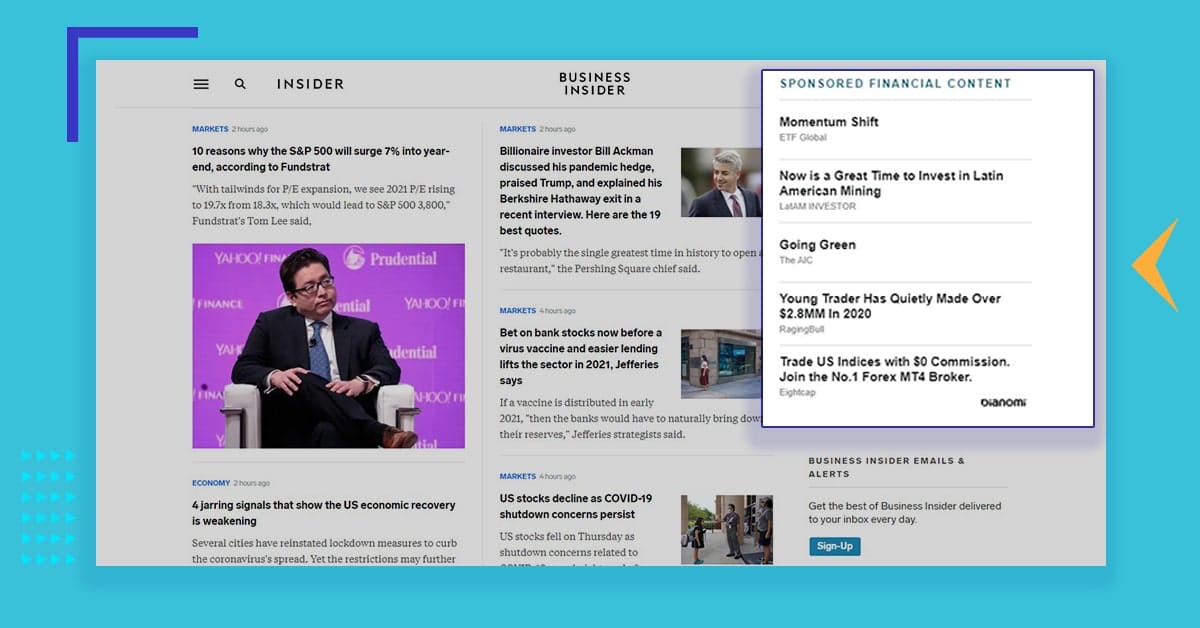
These placements introduce topics that feel relevant to the surrounding content, which increases the likelihood of user engagement.
4. Email Campaigns
Marketers can expect to make $36 for every $1 they spend on email, which explains why organizations continue investing in it heavily as part of their acquisition and retention strategy.
Its long-term value is reflected in the projected $37.5 billion in worldwide email marketing revenue by 2032, showing how dependable the channel has become for driving qualified traffic back to a website.
Cold outreach, subscriber campaigns and automated sequences can help you attract new qualified audiences.
You can apply these steps to use emails effectively within your website marketing strategy:
- Build segmented lists based on behavior, industry or past engagement so each group receives content that aligns with its priorities.
- Use automated sequences to guide prospects through structured journeys that revisit key pages on your website at the right moments.
- Send content that deepens evaluation such as case studies, comparison guides or webinar invitations rather than broad promotional blasts.
- Incorporate behavioral triggers like visit frequency, abandoned carts or downloaded resources to time outreach when interest is highest.
5. Content Marketing
Content shapes how prospects understand your expertise long before they engage with your sales organization, which is why 83% of marketers say content marketing is the most effective method for generating demand.
It gives your website the depth and substance needed to educate buyers, answer specific questions and support the thinking behind high-value decisions.
When your content reflects real challenges in your market and provides guidance that prospects can apply immediately, it encourages them to return and engage with more intent.
Over time, this approach creates a steady flow of visitors who see your company as a credible source before they ever reach out.
A content marketing strategy should, when possible, strategically encompass all of these subsets:
- Blog articles that address high-intent topics, industry issues and solution-oriented queries
- Web copy that guides visitors through your value proposition and encourages deeper exploration
- Digital PR that earns placements on reputable sites and expands reach to audiences you may not capture organically
- Infographics and visual assets that simplify complex ideas into formats people save and share
- White papers and eBooks that offer deeper insight to prospects evaluating you at a strategic level
- Video content that clarifies concepts, demonstrates capability or highlights customer outcomes
- Checklists and toolkits that help prospects take action while naturally guiding them back to your solutions
- Podcasts that position your brand as a consistent source of perspective and subject matter expertise
For instance, Perplexity runs a consistently updated blog that covers product updates, research breakthroughs and broader industry topics.

Each article gives prospects a reason to return to the site, explore new capabilities and stay connected to how the company is evolving.
It also keeps the website active with fresh content that brings people back whenever they want to see what’s new.
6. LinkedIn Ads For B2B
LinkedIn has 270 million users in the U.S., giving companies access to the largest concentration of business professionals on the platform and the highest reach of any country using it.
Many of these users come to LinkedIn to follow industry changes, evaluate solutions and stay connected to what matters in their role, which creates a natural path back to your website when your content or offer aligns with their priorities.
The essential steps for setting up a successful LinkedIn B2B ads campaign include:
- Setting your goals: Deciding whether to run a LinkedIn ads campaign depends on what you need to achieve. Some of the goals that are most easily achievable on LinkedIn include:
- Getting new leads by offering a promotion or a free demo of your products or services
- Fostering brand awareness and exposure
- Building a contact list by offering a white paper or industry report
- Targeting the right audience: LinkedIn offers a wide variety of targeting options for businesses that are targeting other business professionals. These include:
- Demographic options such as interest, age and location
- Remarketing lists for showing ads to users who have already interacted with your website
- Email lists for advertising to LinkedIn audience segments based on a list of email contacts or lists of organizations
- Choosing the right type of ads: A variety of LinkedIn ad types help advertisers reach specific goals. These ad types include:
- Text ads that are most suitable for companies looking to boost their brand awareness
- Sponsored content ads that blend in with the LinkedIn feed and are suitable for building a contact list
- Sponsored InMail ads that allow sending of personalized messages to target audiences using LinkedIn’s internal messaging system
For instance, Stanford uses LinkedIn ads to highlight its online graduate programs, presenting a direct offer that fits naturally within a professional setting.
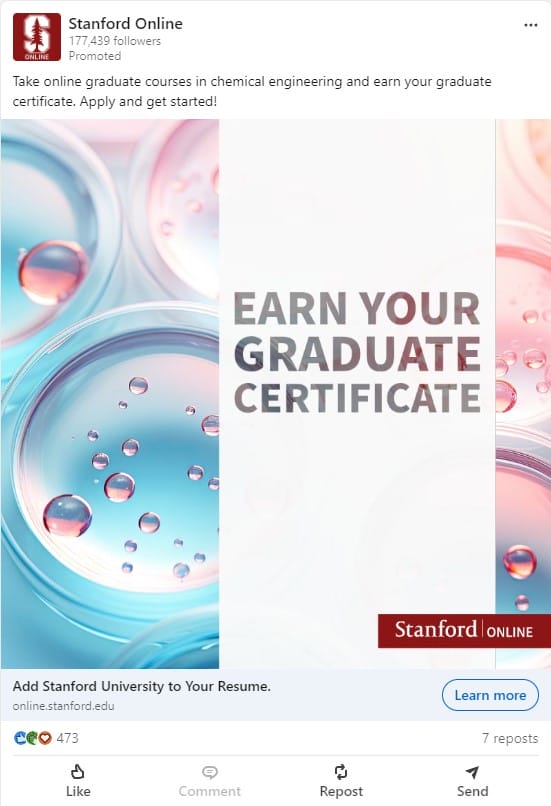
This kind of promotion reaches users who are already thinking about their career direction or educational goals, so the message feels timely and relevant.
It shows how LinkedIn can guide interested prospects to a website when the content reflects what they’re actively considering.
7. Facebook & Instagram Ads For B2C
Facebook is the most widely used social platform with 3.07 billion users, closely followed by Instagram at 3 billion, giving advertisers access to audiences at a scale no other network can match.
This reach allows your message to appear in moments when people browse casually, explore new content and engage with ideas that catch their interest.
Facebook and Instagram ads are a highly effective website marketing strategy for these reasons:
- Great targeting breadth: The specificity and possibilities of Facebook and Instagram ad targeting are immense. You can target and narrow in on the most specific target audiences that are most likely to become your customers in several easy steps.
- Sufficient ad exposure: Facebook algorithms ensure that users do not see too many ads from the same advertiser, making it a potentially fertile ground for marketers.
- Command of attention: Facebook and Instagram ads are difficult to ignore because they are embedded right into the newsfeed and even Instagram stories.
- They work for all businesses: B2C companies of all profiles and in all industries can find their ideal target audience on Instagram and Facebook through very granular targeting.
A product-focused Instagram ad like this one from LaLueur shows how visual storytelling can capture attention without breaking the flow of the feed.
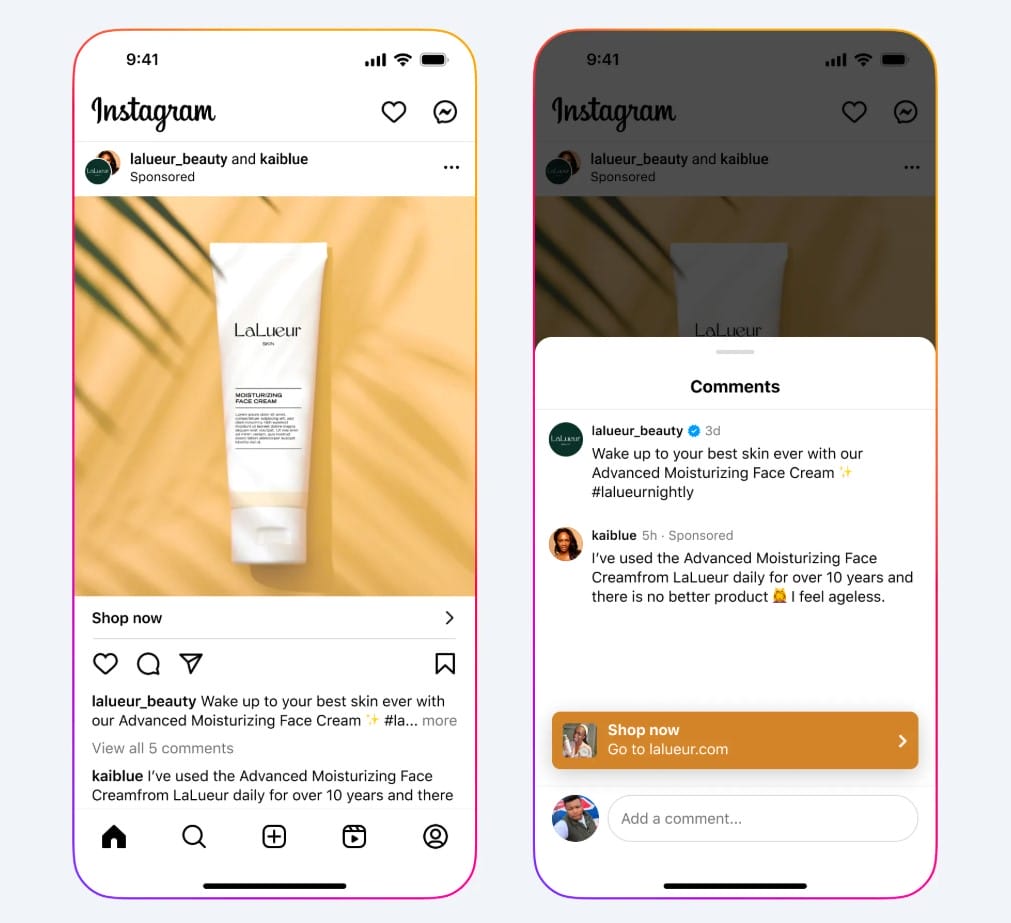
The image, short caption and direct call to action work together to guide users toward the product page at the moment their interest peaks.
8. Google Business Profiles & Local SEO
Customers are 70% more likely to visit and 50% more likely to consider purchasing from a company with a complete Google Business Profile, which shows how much influence this listing has on local decision-making.
For physical locations or service-based businesses, the profile often becomes the first place prospects look when they want quick confirmation of hours, services, reviews or basic details before moving on to the website.
When the profile is accurate and consistently updated, it supports discovery from people who are already searching with intent and are close to taking action.
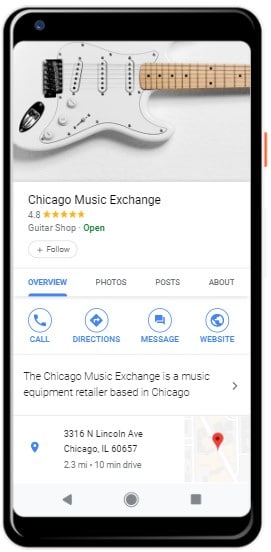
To improve your Google Business Profile and support local website traffic, focus on the following:
- Complete every section, including hours, service areas, descriptions, attributes and categories, so prospects get the information they expect without searching elsewhere
- Add high-quality photos that show your location, products or work to help visitors understand what to expect before they visit
- Encourage and respond to reviews since active engagement signals credibility and influences both local ranking and customer trust
- Publish Google Posts regularly to highlight offers, events or updates that guide people toward your website
- Monitor profile insights to see how often users click through to your site, request directions or call, then adjust your strategy based on those patterns
9. Influencer Marketing
Influencer marketing uses the reach and impact of an influential online figure with a large following and a strong brand reputation in a certain niche to support your brand.
Spending in this channel is projected to reach $12.17 billion by 2026, which shows how often companies turn to creators when they want to reach audiences that already have built-in trust and interest.
When an influencer talks about your product or service, their audience pays attention because the recommendation feels familiar and tied to someone they follow regularly.
Influencers can endorse your brand or website and co-create content in order to drive your sales and increase general brand awareness.
To make the most of influencer marketing as a website marketing strategy, you need to:
- Identify influencers who share your values and audience, ensuring their tone, content style and followers align with the customers you want to attract
- Review their performance analytics to confirm they reach real, engaged audiences, paying attention to patterns in comments, views and interactions relative to follower count
- Set clear goals for the partnership, such as increasing website visits, introducing a new product, generating qualified leads or driving interest in a specific asset like a whitepaper or newsletter
- Provide guidance that supports authentic content so the influencer can speak naturally while still directing their audience toward your website
- Track outcomes across traffic, conversions and engagement to understand which partnerships deliver the most meaningful results
10. Guest Posting
Guest blogging is a content marketing strategy that consists of writing for an online publication that is not your own, but should include a link to your website.
Mentioning your website and linking to it on a website with a high domain authority will generate highly qualified traffic, provide an SEO boost and contribute to your reputation as an industry expert.
When creating guest blog posts to market your website, it’s important to follow these best practices:
- Align your content with your business’s services: The link you use in the guest blog post should add value to the content and also lead to the page on your website that is relevant to the topic.
- Link to high-quality content: Guest posting is your opportunity to establish yourself as an authority in your field, so make the most of it.
11. Targeted Thought Leadership
Thought leadership is a marketing method that establishes your brand as an expert authority in your industry.
Thought leadership’s goal is to provide an entry point to your business by solidifying you as a source of expertise in your field.
It’ is’s a subset of content marketing that taps into the talent and experience within your organization.
To build thought leadership that attracts your target market, one of the best ways to establish authority on your topic is to produce deep research on the subject.
Remember, you have to present in-depth knowledge that no one else in your industry has.
To do that, follow these steps:
- Tap into questions your potential customers are asking: Turn to forums like Reddit, Quora, Yahoo Answers, UberSuggest and others to find out what questions your target audience is asking about your business. This informs the content you should create and the questions you should answer.
- Revise these questions regularly: Industry trends evolve and new products and services pop up continuously. That’s why answers to old and new questions also change. To stay ahead of the curve, look up to tools like Google Trends and keep your knowledge base up-to-date.
- Display your thought leadership beyond blog articles: Even though your website’s blog section should be the main source of expert knowledge, posting your thought leadership content on other platforms is also critical for discovering new audiences and potential customers. Guest posting is a great way to reach out to relevant and highly qualified audiences interested in your expert knowledge.
- Brand your business: While creating an entry point and building trust with your prospects through thought leadership marketing, seize the opportunity to brand your business by demonstrating how well you understand your B2B clients’ pain points and needs. Create thought leadership content that supports your brand identity and your style in all of its facets.
Digital Silk’s Website Marketing Examples
Digital Silk creates data-driven and brand-specific website marketing strategies for businesses across all industries and backgrounds.
Some of our more recent projects include:
1. Beckway
Digital Silk transformed Beckway’s website by replacing dense, outdated content with a clear six-page structure built around the way private equity stakeholders search for information.

The redesign introduced modular sections, streamlined messaging and a guided user journey that helps visitors understand Beckway’s capabilities and move toward contacting the firm.
The blog-style Insights section functions as a thought-leadership hub, giving Beckway an ongoing way to share expertise and drive return traffic.
2. Lifestyle With Roy Ice
Lifestyle faced a major gap in reaching younger, mobile-first viewers, with no TikTok presence and declining engagement on Instagram despite having millions of weekly TV viewers.
Digital Silk developed a short-form content strategy that turned their extensive library of long-form episodes into high-impact, short-form Reels and TikToks, each crafted with platform-native hooks and a recognizable visual style.
Trend-aligned content, behind-the-scenes storytelling and guest collaborations expanded reach and pulled new audiences into the brand’s digital ecosystem.
These efforts generated over 1.2 million video views, rapid follower growth and a steady flow of new users discovering Lifestyle and engaging with the website.
How To Set SMART Goals For Website Marketing
Before creating a website marketing strategy, the first thing to do is set goals for your website that are Specific, Measurable, Achievable, Relevant and Time-based – in short, SMART.
Let’s review the three steps of setting up your SMART website marketing goals:
1. Define The Purpose Of Your Website
Your website’s purpose and goal can be one of the following:
- Brand awareness and education: I want to introduce my new brand or product to a large, targeted audience
- Lead generation: I want to attract qualified audiences and incentivize them to provide their contact details (ex. newsletter subscription) and/or schedule a call with my sales team
- Sales: I want to attract qualified audiences and increase conversions on my site (eCommerce)
- Loyalty: I want to attract existing customers and reward their loyalty and/or advocacy to increase repeat sales
2. Analyze Your Competition
To set realistic website goals, check out what your competition is up to and how they are performing.
To do so, evaluate the competitors’:
- SEO performance: How many keywords are they ranking for? Which keywords are they ranking for? How many backlinks do they have?
- On-site content posting frequency: How often do they post new content to their blog or resources section?
- Social media posting frequency: What social media do they use? How often do they post on each?
- Site performance: How many monthly do they attract? What is their demographic?
There are useful online tools that can help you analyze your competition, including their backlinks, keywords and referrals, such as:
- SimilarWeb: A web analytics website that provides services and information such as clients’ and competitors’ website traffic volumes, referral sources, keyword and demographic analysis and other key metrics.
- SEMRush: A tool that provides insight into your competitors’ websites and keywords that bring organic traffic to their websites
- Ahrefs: Similar to SEMRush, it lets you explore the competition’s traffic sources, referrals, keywords and ranking position

3. Define The KPIs For Your Website Marketing Strategy
Key performance indicators (KPIs) are measurable values that show your business’s progress toward a set result.
KPIs will help inform you if and when you have achieved your website’s marketing goals, such as generating more qualified leads, improving the subscriber rate or increasing awareness and trust.

The most telling website marketing key performance indicators can be summed up and categorized as follows:
Awareness level: Gain insights into your brand awareness by:
- Looking at the amount of direct traffic coming to your website using web analytics
- Reviewing the growth of direct traffic over a specific time period, which will give you information on your brand awareness growth
- Measuring the referral traffic
- Tracking your organic share of voice by analyzing your most important keywords in relation to your main competitors and your total number of mentions on social media
- Tracking your rate of organic backlinks
- Surveying and interviewing your customers
Number of qualified leads: You can track qualified leads by using customer relationship management software. Google Analytics transmits data submitted by a user through a lead generation form to the CRM platform. You can score and rank different leads to establish the most qualified among them.
Conversion rate: This metric shows how many website visitors have taken the desired conversion action, which could be anything from signing up for a newsletter or downloading a white paper to purchasing a product.
Create Your Website Marketing Strategy With Digital Silk
A website marketing strategy is a series of steps and tactics a business should take in order to establish itself as an industry authority, generate the highest number of qualified leads and outrank competitors.
Effective execution ensures that every touchpoint brings users closer to the information or solution they’re seeking on your site.
Digital Silk uses industry expertise, data-driven methodologies and full-funnel execution to build website marketing strategies that drive measurable growth and long-term impact.
As a full-service digital marketing agency, we offer:
- Data-driven digital marketing campaigns
- SEO services
- PPC management
- Social media marketing
- Custom website design
- Premium branding strategies
Contact our team, call us at (800) 206-9413 or fill in the Request a Quote form below to schedule a consultation.
"*" indicates required fields


